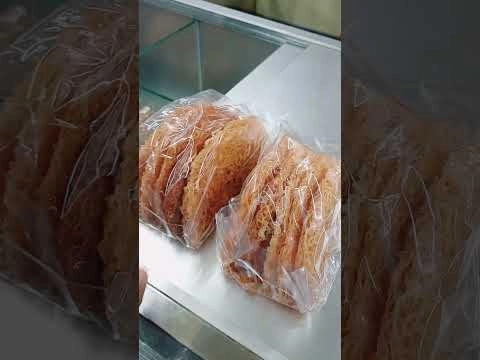“Sarsatia” (also spelled Sarasatia / Sarasatiya) is a traditional sweet from Sambalpur, in western Odisha.
Here’s what I found out about it — its ingredients, how it’s made, when it’s eaten, and why it’s special:
What is Sarsatia
It is a crisp, mildly sweet dessert/snack.
It looks a bit like vermicelli or a net of fried strands; quite delicate and “crispy.”
It has a smoky, earthy aroma/flavour, in part due to a special ingredient — resin from a tree called Ganjer.
Ingredients
Here are the key components:
- Resin from Ganjer tree twigs: Gives the unique flavour, aroma and binding / resinous component.
- Rice powder/flour (raw rice): The bulk of the base for the batter.
- Sugar: For sweetness. Not overly sweet — balanced.
- Water: To soak, extract resin, and make the batter.
- Oil for deep frying: To fry the batter into the thin, crisp net / vermicelli shapes.
How It’s Made (Process)
- Collect twigs of Ganjer from hill ranges (e.g. Barapahad region).
- Clean them and soak overnight in water so that resin/resinous content is extracted. Sometimes the bark is peeled.
- After soaking, the resinous water is separated/strained.
- Mix that with raw rice powder/flour, sugar, and possibly more water to make a thin batter.
- Heat oil for deep frying. Using fingers or a special technique, pour or spread the batter into the hot oil so that it forms thin, net-like/vermiculated strands/patterns. Fry till crisp.
- Remove, drain off excess oil, cool, and serve. The shape is often netted/folded, perhaps triangular or mesh-like.
When / How It’s Eaten / Cultural Importance
Sarsatia used to be common in many homes in Sambalpur especially during festivals like Pua Jiuntia, Bhai Jiuntia, Puspuni, Dussehra, etc.
Also made as prasāda in some temples (for example Ramachandi temple) during festivals.
It is eaten on its own (as a snack or sweet), sometimes with milk or pudding, or maybe even with curry according to some accounts.
Challenges / Rarity
The main challenge is availability of the Ganjer twigs/resin. The trees are less abundant now, making the key ingredient harder and expensive to source.
The process is laborious and requires skill. Because of this, fewer shops and homes make it nowadays; it’s becoming rare.
There are only a few shops in Sambalpur that still make authentic Sarsatia.
Location Map: View on Google Maps

